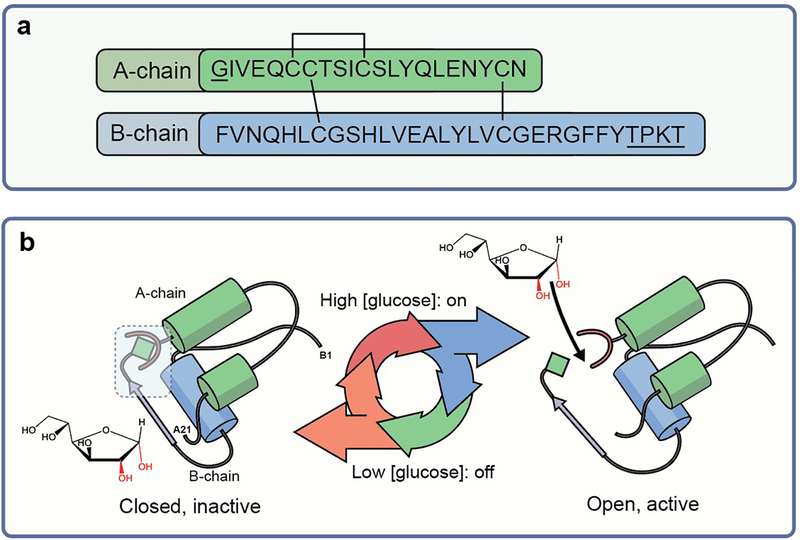Fig. 1.
(a) Design strategy for intrinsic molecular GRIs. Sequence of insulin showing A-chain and B-chain with typical sites of chemical modification underlined (GlyA1 N-terminal and B-chain residues B27–B30) that affect pharmacokinetics and monosaccharide responsivity. Amino acid residues are labelled using their standard single letter codes. (b) Design scheme of monosaccharide-responsive insulin. The ribbon model of closed inactive insulin (T-state monomer) is shown (with a free glucose molecule adjacent to it); the blue box highlights sites of modification (red horseshoe shapes indicate glucose-binding element; green diamonds indicate internal diol). The envisioned glucose-regulated conformational cycle in which a monosaccharide acts as a competitive ligand to regulate a conformational switch between the closed state (inactive in absence of ligand) and the open state (active in presence of ligand) is illustrated.

